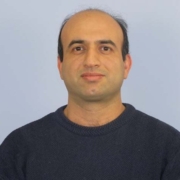Optimal Single-User Interactive Beam Alignment with Feedback Delay
Communication in Millimeter wave (mmWave) band relies on narrow beams due to directionality, high path loss, and shadowing. One can use beam alignment (BA) techniques to find and adjust the direction of these narrow beams. In this paper, BA at the base station (BS) is considered, where the BS sends a set of BA packets to scan different angular regions while the user listens to the channel and sends feedback to the BS for each received packet. It is assumed that the packets and feedback received at the user and BS, respectively, can be correctly decoded. Motivated by practical constraints such as propagation delay, a feedback delay for each BA packet is considered. At the end of the BA, the BS allocates a narrow beam to the user including its angle of departure for data transmission and the objective is to maximize the resulting expected beamforming gain. A general framework for studying this problem is proposed based on which a lower bound on the optimal performance as well as an optimality achieving scheme are obtained. Simulation results reveal significant performance improvements over the state-of-the-art BA methods in the presence of feedback delay.


